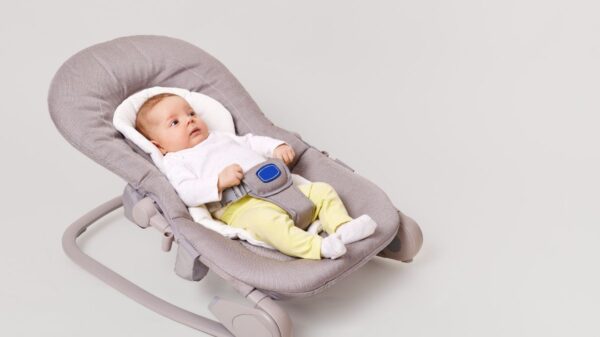Welcoming a newborn into your life is a beautiful and transformative experience, but it can come with its fair share of challenges. For many new parents, dealing with colic is one of the most challenging hurdles. You’re not alone if your baby seems inconsolable, especially during evening hours. This comprehensive guide explores the best sleeping position for colic baby relief and proven sleep tips to soothe and comfort your little one.
What Is Colic?
Colic is defined as frequent, prolonged, and severe weeping or fussiness in an otherwise healthy infant. It often starts around the second week of life and may continue until the baby is three to four months old. The exact cause is unclear, but colic may be linked to digestive discomfort, reflux, gas, or overstimulation.
Why Sleep Matters for Colicky Babies

Sleep is vital for your baby’s brain development, emotional regulation, and physical growth. Unfortunately, colicky babies often struggle to settle into a restful sleep. Discovering the Best Sleeping Position for Colic Baby, along with a calming bedtime routine, can be a game-changer for both infants and exhausted parents.
Creating a Safe Sleep Environment
Before experimenting with sleep positions, establish a secure sleep environment:
- Use a firm, flat mattress in a crib or bassinet.
- Remove soft bedding, pillows, stuffed toys, or bumpers.
- Always place your baby on their back for sleep.
- Maintain a comfortable room temperature.
- Keep your baby’s sleep area in your room for at least the first 6 months.
This foundation supports not only better sleep but also aligns with AAP guidelines to reduce the risk of Sudden Infant Death Syndrome (SIDS).
Best Sleeping Position for Colic Baby
1. Back Sleeping: The Gold Standard
The safest and most recommended position for all babies—colicky or not—is sleeping on their backs. According to the American Academy of Pediatrics, back sleeping significantly reduces the risk of SIDS. It also prevents your baby from rolling onto their stomach unsupervised.
If your baby suffers from colic and reflux, sleeping on a slightly inclined surface may help.
2. Elevated Head Position: Colic and Reflux Relief
Some babies with colic also experience gastroesophageal reflux. Elevating the head of the crib (up to 30 degrees) can help ease discomfort. This can be done by placing a firm wedge under the mattress (never directly under the baby).
Necessary: Always consult your paediatrician before using incline techniques, as improper angles can increase the risk of sliding or positional asphyxiation.
3. Side-Lying Position (Supervised Only)
While not safe for unsupervised sleep, some parents find the side-lying hold helpful during pre-sleep cuddling. This position may reduce gas and digestive discomfort. Always return your baby to their back for sleep.
4. Swaddling for Security
Swaddling can mimic the cosiness of the womb and provide comfort. Use a breathable swaddle and ensure your baby’s hips can move freely. Stop wrapping once your baby shows signs of rolling over.
5. Cradled or Rocked Sleep (With Caution)
Tilting your baby in your arms or using a baby swing may help them doze off. However, always transfer your baby to a flat, safe sleeping surface once asleep.
Colic Baby Sleep Tips
How can I help a colic baby sleep better? Try these tips:
- Establish a calming bedtime routine (bath, feeding, lullabies).
- Use white noise machines or apps to recreate womb sounds.
- Keep nighttime feeds and diaper changes low-stimulation.
- Avoid overstimulation before bedtime.
Safe Sleep for Colic Baby
 Key Reminders
Key Reminders
- Always place your baby on their back to sleep.
- Avoid allowing your baby to sleep in car seats, swings, or inclined sleepers for extended periods.
- Ensure the crib is nearby but separate from your bed for room sharing.
- Never use sleep positioners unless recommended by a healthcare provider.
Transitioning from Bassinet to Crib
When your baby outgrows the bassinet, transition to a crib with the same safe sleep rules. Keep it consistent to avoid disrupting sleep patterns.
Final Thoughts
Finding the best sleeping position for colic baby comfort is a journey of patience, adaptation, and love. Stick with safe sleep practices, listen to your instincts, and consult your paediatrician. Remember, colic is a temporary phase. With consistency, support, and a sleep-friendly environment, you and your baby will start getting the rest you deserve.
Frequently Asked Questions (FAQs)
Can babies with colic sleep on their stomachs?
No. Stomach sleeping increases the risk of SIDS and is not recommended, even for colicky babies.
Is side sleeping good for colic relief?
Only under supervision. It can help with digestion but should not be used during unsupervised sleep.
Are pacifiers safe for sleep?
Yes, pacifiers can reduce SIDS risk and soothe colicky babies. Avoid pacifier clips or attachments during sleep.
How to settle a colic baby at night?
Gently rock, swaddle, or use white noise to calm the baby; keeping a consistent bedtime routine also helps soothe discomfort.
What position should a baby with colic sleep in?
Always place a colicky baby on their back to sleep, as it’s the safest position to reduce the risk of SIDS, even if they’re fussy.
How to remove colic in a newborn?
Burp frequently during and after feeds, try gentle tummy massages and consult a paediatrician to rule out allergies or reflux.











